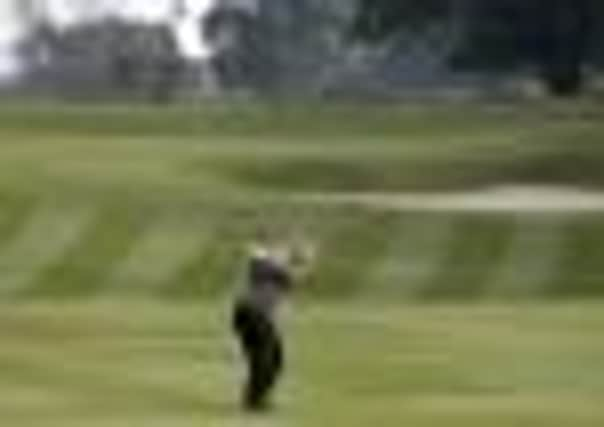Martin Dempster: Dalmahoy’s U-turn is a victory for commonsense


Step forward Alan Tait, the former Scottish Boys’ champion who still gets the sticks out now and again but is mainly deskbound these days as the director of golf at Dalmahoy on the outskirts of Edinburgh.
Seven years ago, before Tait joined the Marriott-owned facility, a decision was taken to carry out some major work on its James Braid-designed East Course, one of Scotland’s top tournament venues in the past.
Advertisement
Hide AdAdvertisement
Hide AdIt involved two new holes being built as well as some of the existing ones being extended, the majority of the work being undertaken on the back nine.
The old 14th, which became the 16th, for instance, was stretched to a 605-yard monster, the green having not only been moved back but also up on to a raised plateau. Even the biggest of big-hitters had their work cut out to even get close in two.
The hole known as ‘Braid’s Brawest’ certainly wasn’t and it’s no surprise whatsoever that the vast majority of those who have played Dalmahoy since the change was made haven’t liked it at all. The members certainly preferred how it used to be, a 450-yard par-4, and now they’ve got it back.
Armed with the negative feedback he’d received about the hole, Tait persuaded his bosses that this particular change hadn’t been for the better. Far from it, in fact. They gave him the money to dig up the green, move it back to where it used to be and everyone is happy again. “From the moment I came here, I thought the 16th was a weak hole, especially for something that is called ‘Braid’s Brawest’,” said Tait, one of the most-respected figures in Scottish golf.
“From the feedback I subsequently received, I also discovered that the members didn’t really like it, partly because it was too long but also because it created a bottleneck and was then followed by a 150-yard walk to the 17th tee.
“When I went to my general manager to ask about changing back to how it had been, he was sceptical at first because a lot of money had been spent on building the new holes and making the other changes back in 2005.
“However, he couldn’t argue when I showed him evidence of the feedback. It was also a tough conversation with Ross McMurray, of European Golf Design, who made those changes, but, to be fair, once he got his head round it he was very supportive.
“The hole is now back playing pretty much the same way it used to – there’s a new bunker on the left side of the green – and the feedback about it has been nothing but complimentary.”
Advertisement
Hide AdAdvertisement
Hide AdThe mistake someone made at Dalmahoy is that they fell into the modern-day trap of believing extra length is the be all and end all in golf. The changes made seven years ago stretched the East Course to a staggering 7,475 yards off the back tees, making it Scotland’s longest course at that time.
Someone thought that tag would have visitors rushing to play it and, for very good golfers who did hit it a long way, it is certainly a demanding test of golf. The irony, though, is that Dalmahoy isn’t the tournament venue it once was, hosting events such as the Solheim Cup, the Scottish PGA Championship and, most recently, the Scottish Seniors Open. These days it’s almost played exclusively by club golfers and for the vast majority, especially on the back nine, it’s become too much of a slog and, therefore, has taken some of the enjoyment out of playing the course.
At least the 16th is back to what Braid laid out nearly a century ago while Tait also deserves credit for the 18th changing from a par 4 to a par 5 under the ‘degree of difficulty’ rule after discovering that the 460-yard hole had an average of 5.9 in medals last year.
Commonsense. Let’s see a bit more of that, please.
Booth comes of age with performance to match
DURING the 2009 Women’s Home Internationals at Irvine Bogside, I remember following one of the matches involving Carly Booth and finding myself both impressed and perplexed at the same time about the Perthshire teenager.
Her ball-striking was awesome and she certainly knew how to manoeuvre her way round the golf course, but I must admit that I found her behaviour towards her opponent somewhat disturbing. She barely talked to her and, one occasion, was almost halfway up the fairway by the time her opponent had teed off.
I put it down to youthful inexperience hoping that, as she matured, Booth would learn that just as important as being able to play well, at least in my book any way, is being able to communicate with people.
It’s taken time, but all credit to Carly as the newly-crowned Scottish Ladies’ Open champion produced as polished a performance off the course as on it at Archerfield Links, both in the build-up to the event and also after winning it.
Having been groomed for stardom from such an early age, it can’t have been easy for Booth to try and lead a normal life. She’s been on the radar for so long that it’s also amazing when you hear she’s still only 19. In Scotland, we have a habit of perhaps expecting too much too soon from our young sportsmen and sportswomen. That has certainly been the case with Booth, one of the most talented players to pick up a club in this country.
But, with a first big win under her belt, she can now go from strength to strength and, eventually, earn the same respect as a global player as Catriona Matthew has during her glittering career.